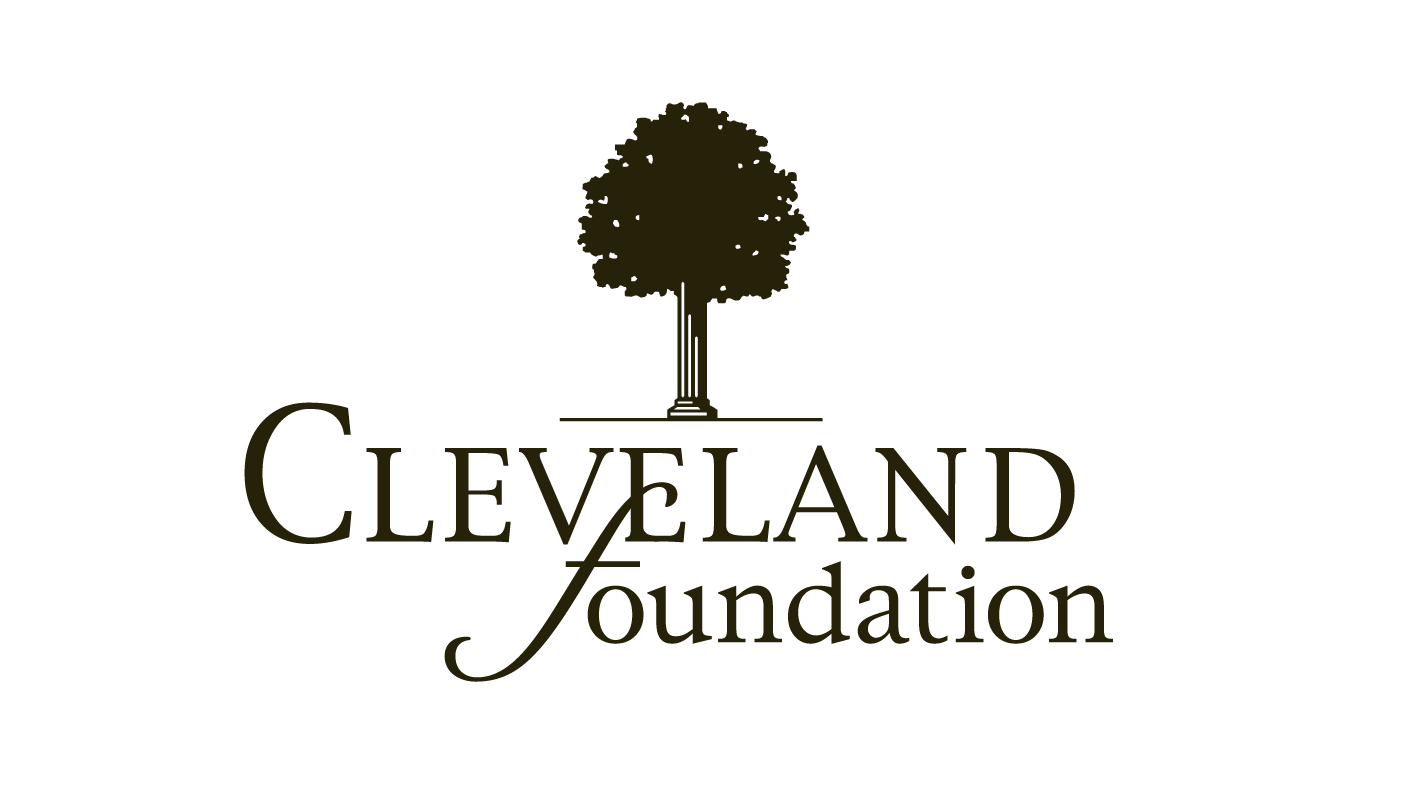Petrochemical polymers known as plastics were developed in the United States as a revolutionary material. Today the global urgency to reframe our approach to the overabundance of plastic detritus in our waterways, landfills, and streets is clear. Exploring our fraught, yet enmeshed, kinship with plastics, Everlasting Plastics considers the ways these materials both shape and erode contemporary ecologies, economies, and the built environment. This exhibition highlights our unseen dependency; demonstrates how plasticity has created expectations for the behaviors of other materials; and points to plastic’s unknown, long-term, and indelible impact on our futures.
On February 3, 2023, just over a month ago at the time of this writing, a Norfolk Southern freight train derailed in East Palestine, Ohio, a village ninety miles southeast of Cleveland, Ohio—where we live—and fifty-one miles northwest of Pittsburgh, Pennsylvania. The freight carried, among other things, vinyl chloride, a chemical used in the production of the petrochemical polymer polyvinyl chloride, more commonly known as PVC. In a unilateral effort to contain the massive spill, local law enforcement, the fire department, Norfolk Southern, and state government lit a controlled fire without consulting the Environmental Protection Agency, residents of East Palestine, or national experts. In Cleveland, we paused, wondering if we would be affected by the resulting malevolent cloud or if our water drew from the now-contaminated Ohio River. We wondered if this were our Chernobyl. We were reassured, terrifyingly, that the airborne poisons were heading not toward us but east, past Pittsburgh, over central Pennsylvania and into New York, and that this cloud would disperse over the ocean. We learned that the watershed poison was also not heading toward us and was instead heading southwest, toward Cincinnati, cresting over Kentucky and under Illinois, where it would yield its toxic contents into the Mississippi River.
Perfected in the United States in the early 1900s, petrochemical polymers, collectively and commonly known as plastics, were embraced as revolutionary materials. Intended to protect the so-called “natural world” and decrease socioeconomic barriers to accessing goods previously only available to the wealthy, plastics were imagined to mimic the materials plundered from the earth, like ivory, coral, and tortoiseshell—and, in many cases, they succeeded. In this way, plastics entered the consumer market as finished goods, ready to use. Plastic thinking abandoned material lineages; readymade goods, conjured from a perceived nothingness, seemed to erase the toxic legacies of extraction—of people, labor, and land—entrenched in settler colonial material culture.
As plastics proliferated over the past century, alongside and in tandem with wars, viruses, and technological advancements, cultural attitudes shifted toward disposability, single-usage, and abstraction. Today, plastics exist as both a feared anathema and an accessible material for experimentation and social welfare. Acutely visible yet unsettlingly unseeable traces of plastics course through our veins, waterways, and air molecules. As in East Palestine, urgency emerges most often when toxins are perceivable, while passive pollutants pose silent dangers. The material exists all around us, simultaneously enabling and threatening every part of modern life. So, how can we live without plastics? But, also, how can we live without plastics? Each emphasis indexes a different set of concerns.
Everlasting Plastics sheds light on this tension, exploring the cultural ubiquity of plastics and the ways our reliance on them has shaped a fraught, yet enmeshed, kinship. Bringing together five artists and designers whose practices reckon with the stakes, aesthetics, and temporalities of global calamity, this exhibition begins to outline an epistemology of plastic, experimenting with questions of function, form, mass, matter, and salvage. Site-specific works by Xavi Aguirre, Simon Anton, Ang Li, Norman Teague, and Lauren Yeager stage a dialogue about the ways plastic both shapes and erodes contemporary ecologies, economies, and environments (built and otherwise), while also suggesting potential alternatives and constructing necessary reimaginings for the ways in which the material is deployed. Embracing Lesley Lokko’s theme for the Biennale Architettura 2023, The Laboratory of the Future, the exhibitors employ plastic and plastic thinking to test how we interact and interfere with waste streams and methods of reuse, drawing attention to the material afterlives of often-concealed infrastructures; they pay homage to craft traditions and intergenerational legacies of object-making while critiquing modernist ideals; and they invite us to unpack our bodily entanglements with the synthetic.
Rather than making a value judgment about plastic, Everlasting Plastics illuminates and unsettles our relationships with the material, cultivating a more expansive way to think about its materiality and evolution. It acknowledges that our toxic interdependency is now a global phenomenon, while also understanding plastic’s possibilities as an agent of change. This exhibition invites an architectural perspective to highlight our unseen dependency on plastics; demonstrates the ways in which plasticity has created expectations for the behaviors of other materials; and points to plastic’s unknown, long-term, and indelible impact on our futures.
We write this from Ohio, a state that leads in petrochemical polymer production; within the United States of America, a country which sensationalized plastics; and from a generation that has repeatedly been told that it was possible to reduce, reuse, and recycle our way out of this crisis. Our hope is that Everlasting Plastics provides a shift in this tired rhetoric—that through this exhibition, concurrent programming, and partnerships, we expand our ways of thinking and allow for a more confrontational, more tangible, more social, more plastic approach.
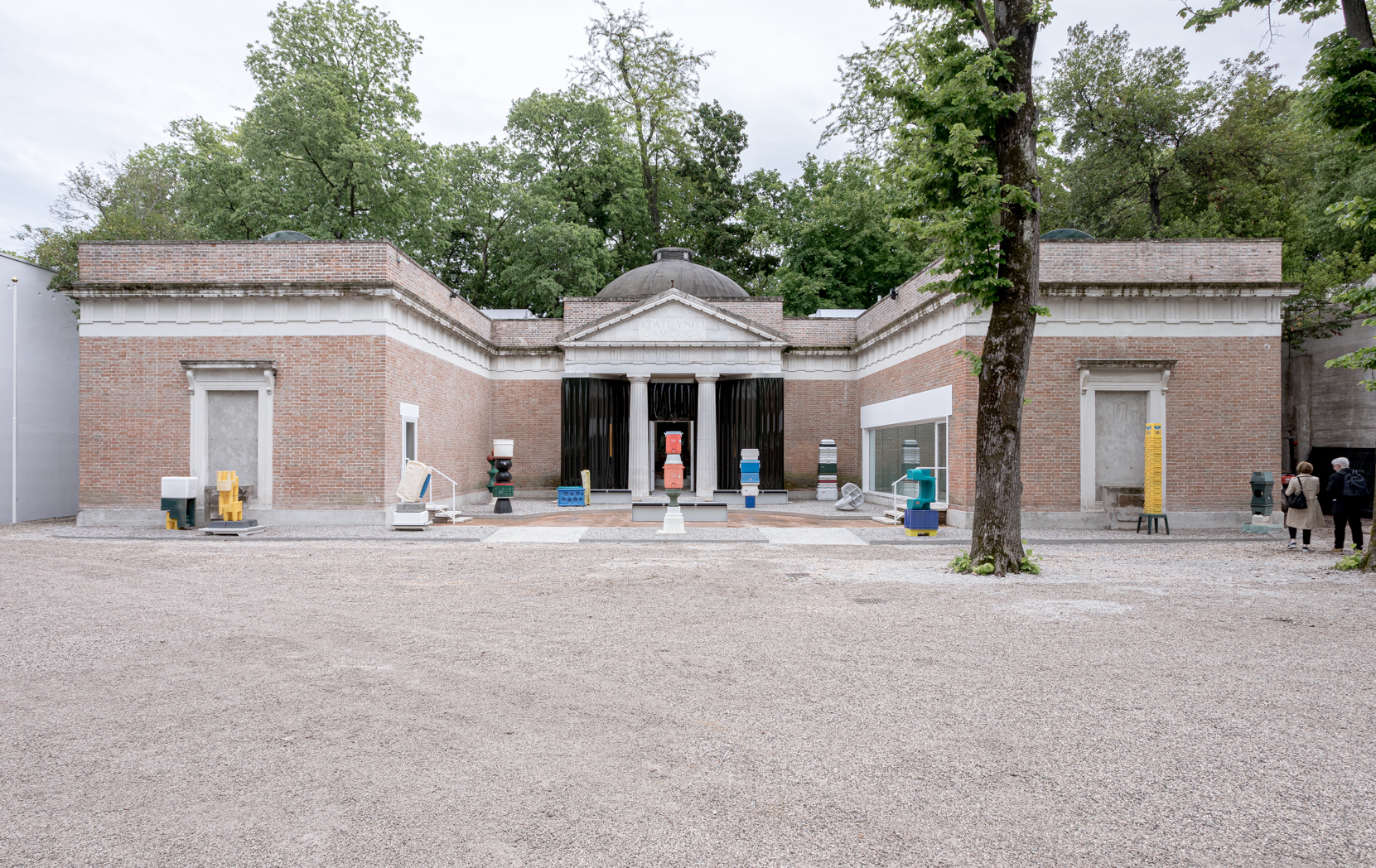


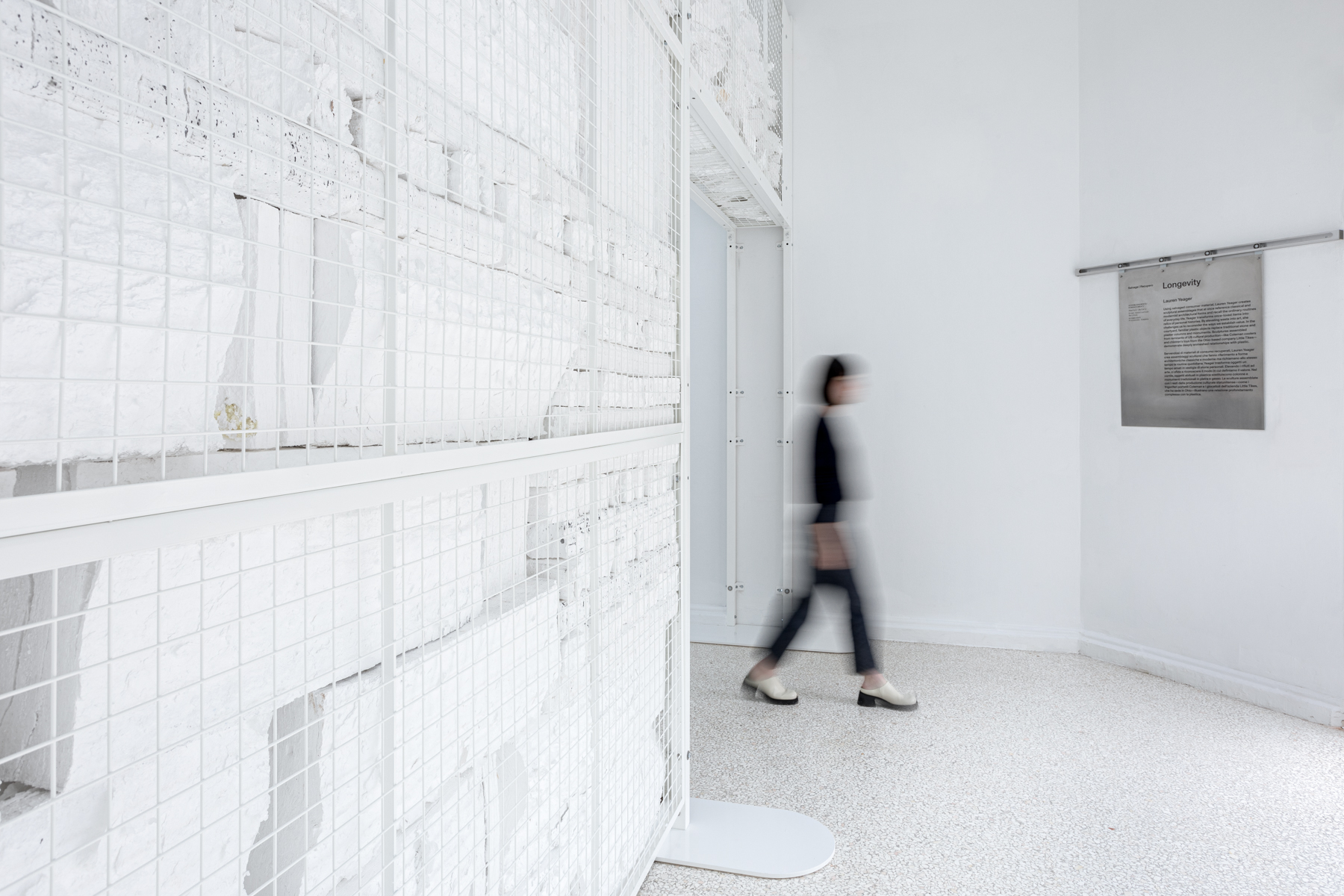
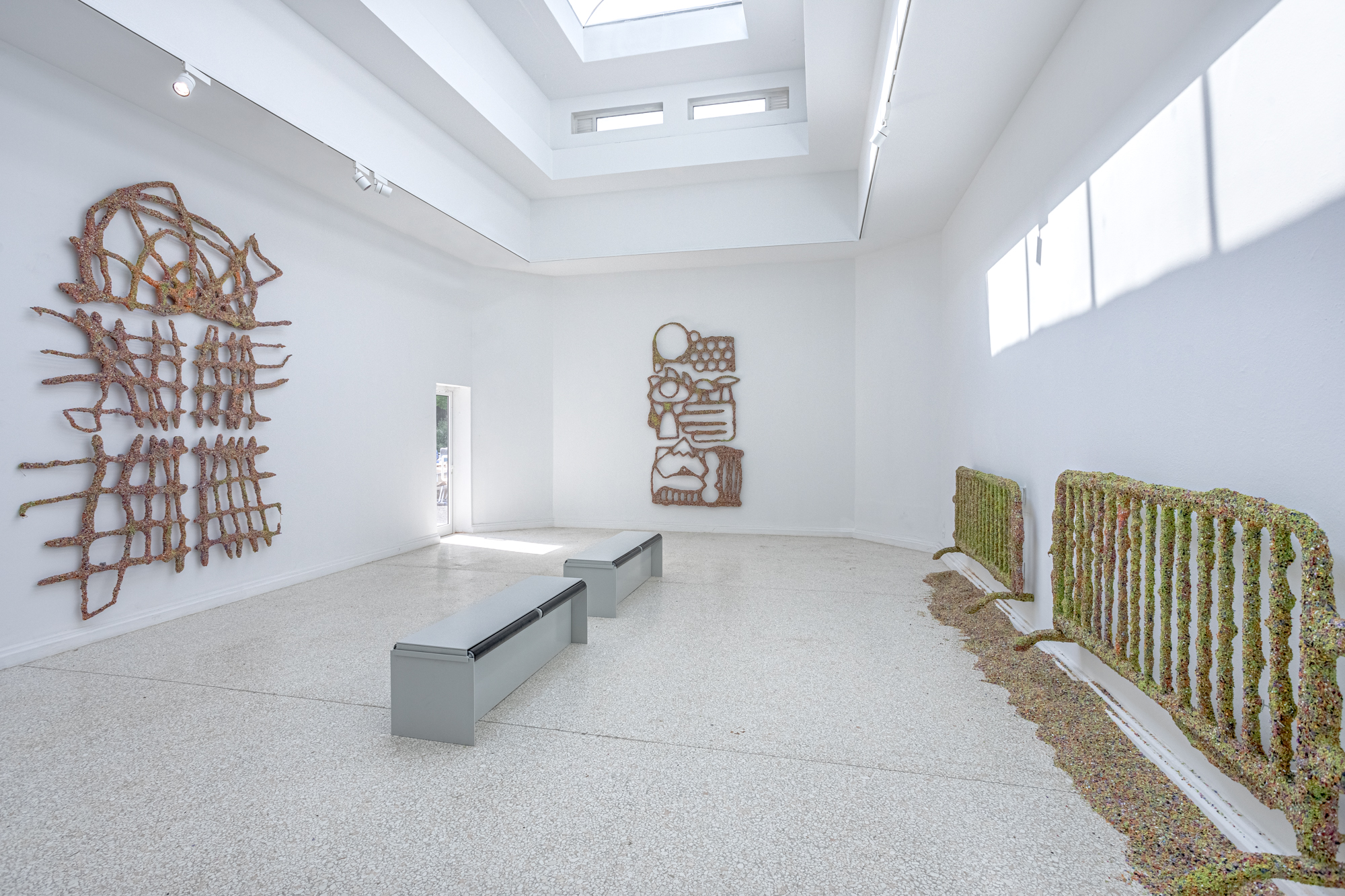
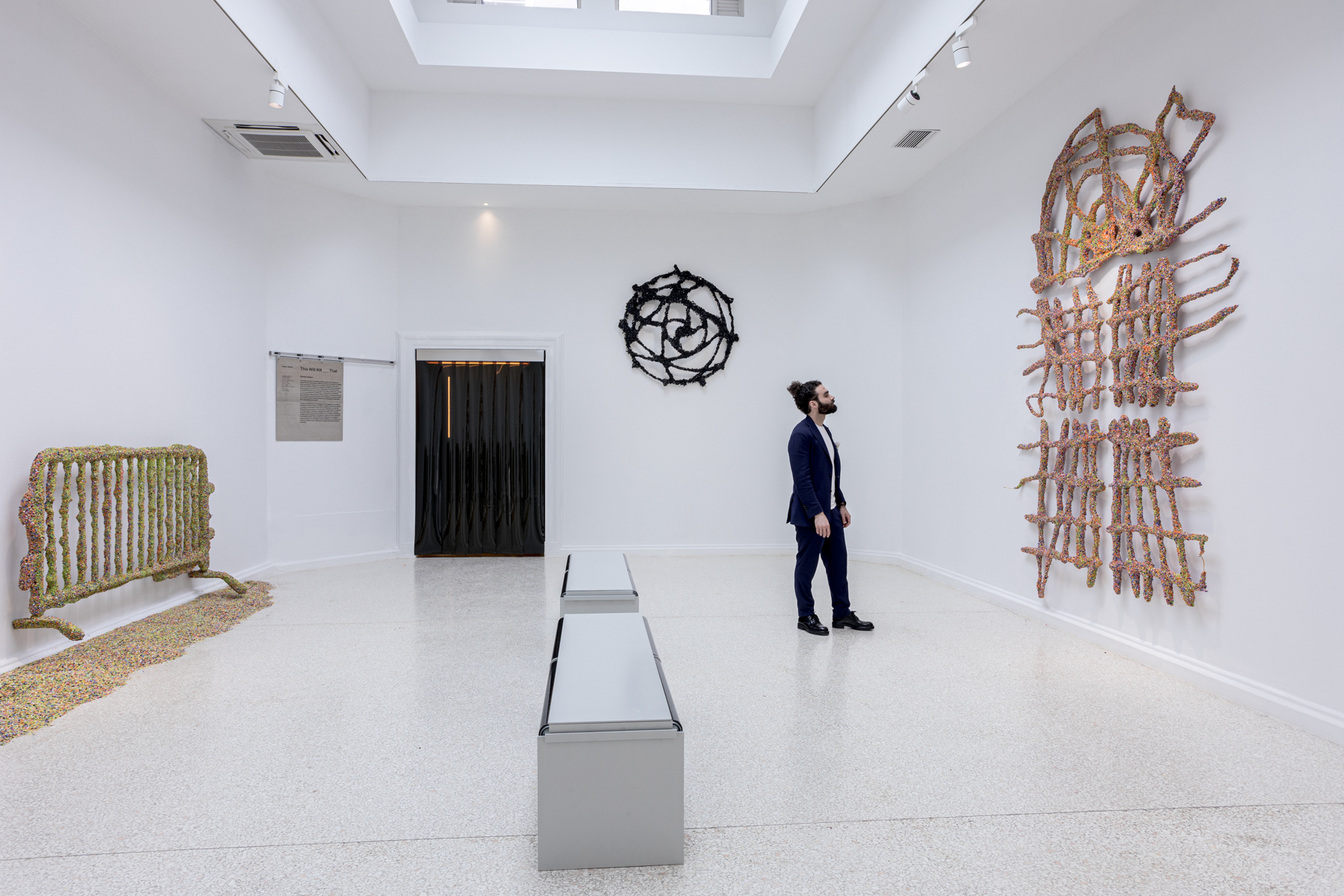
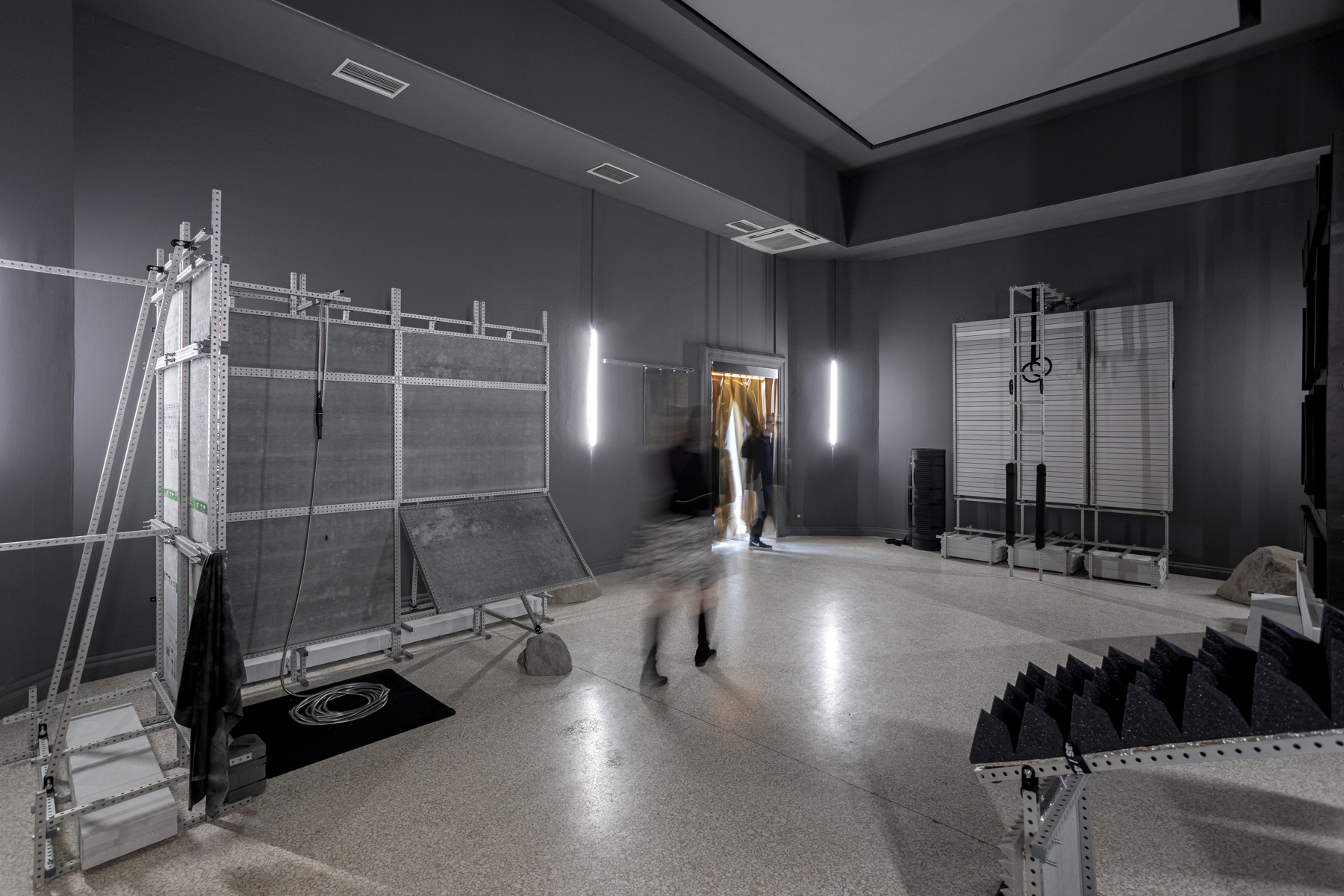
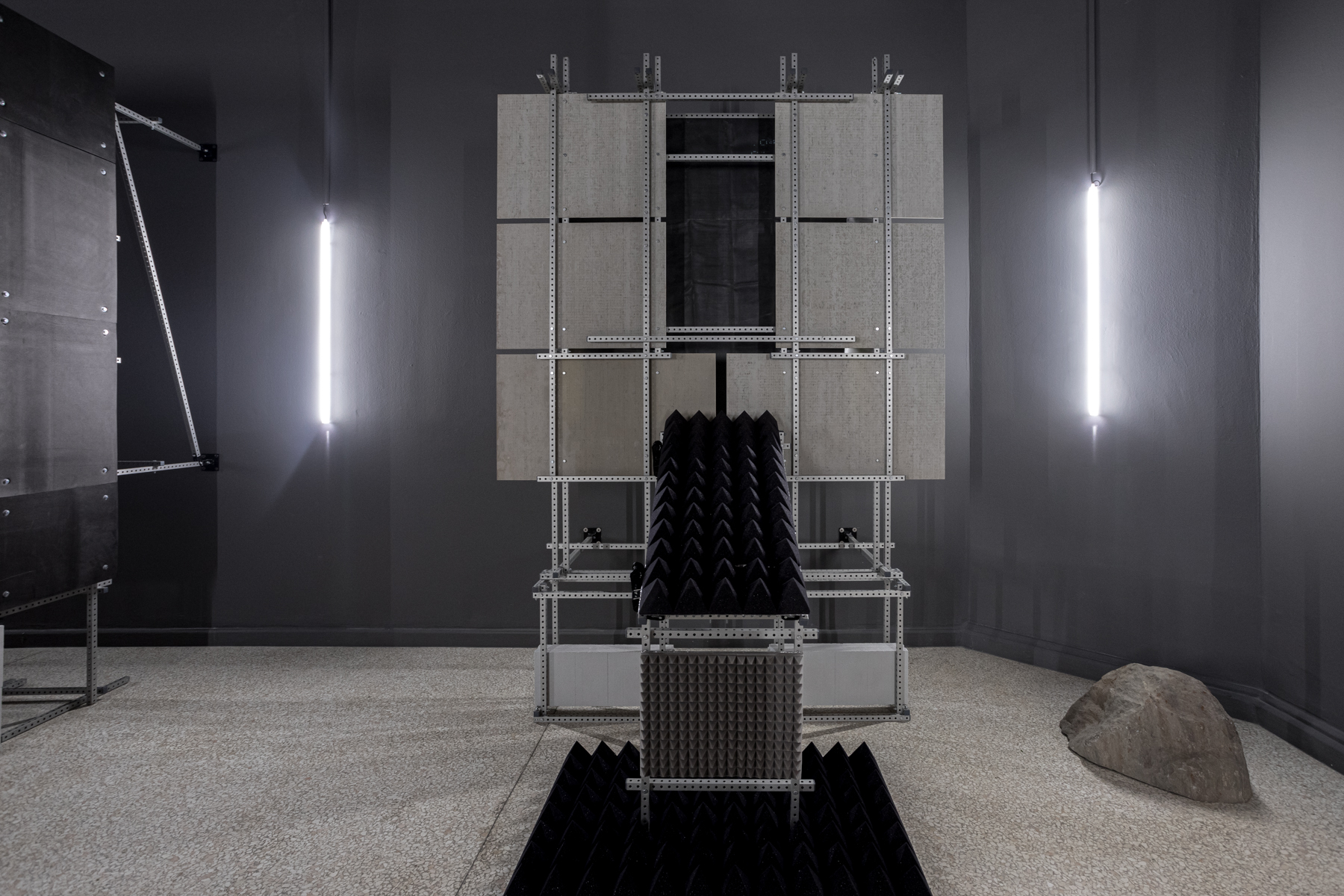
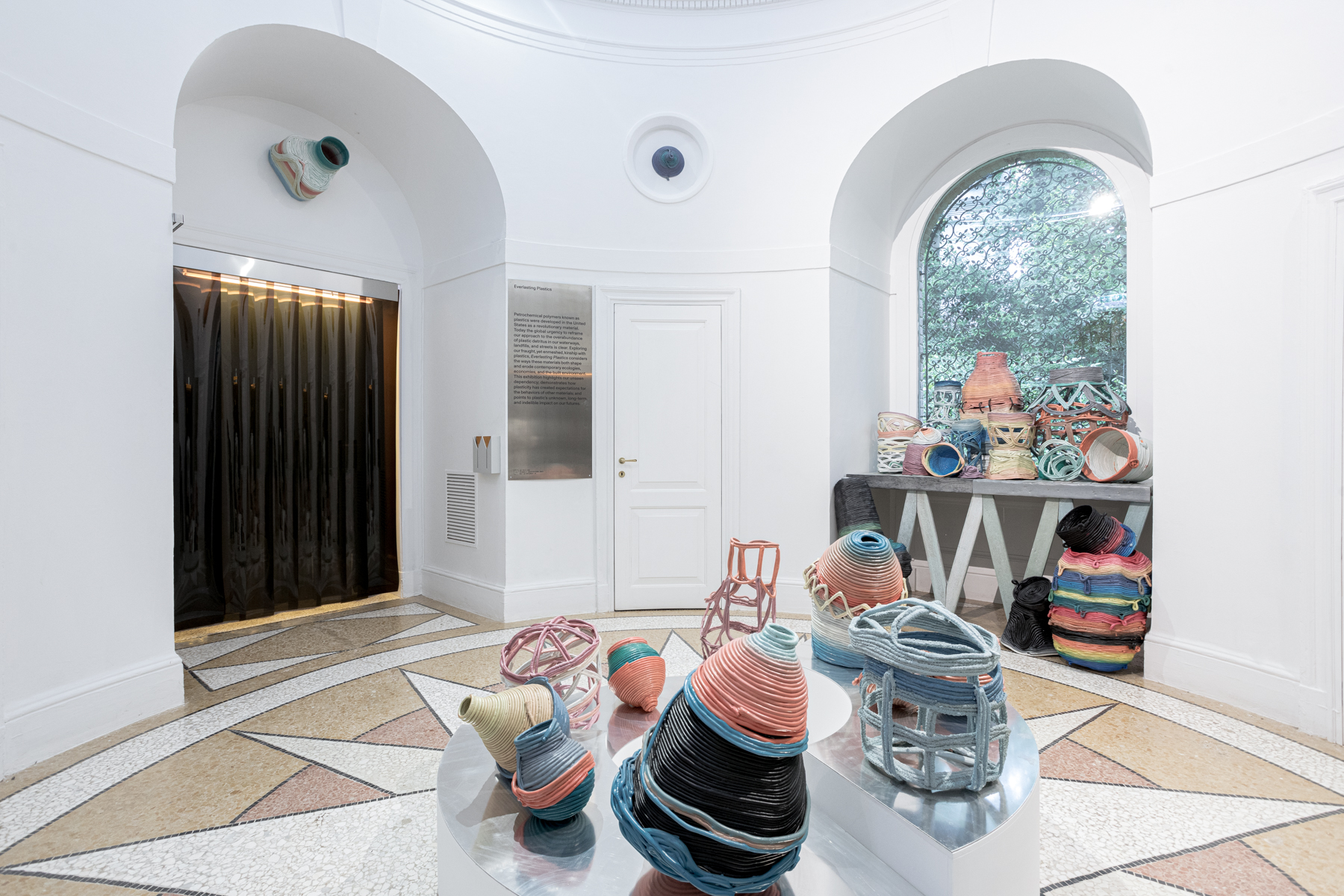
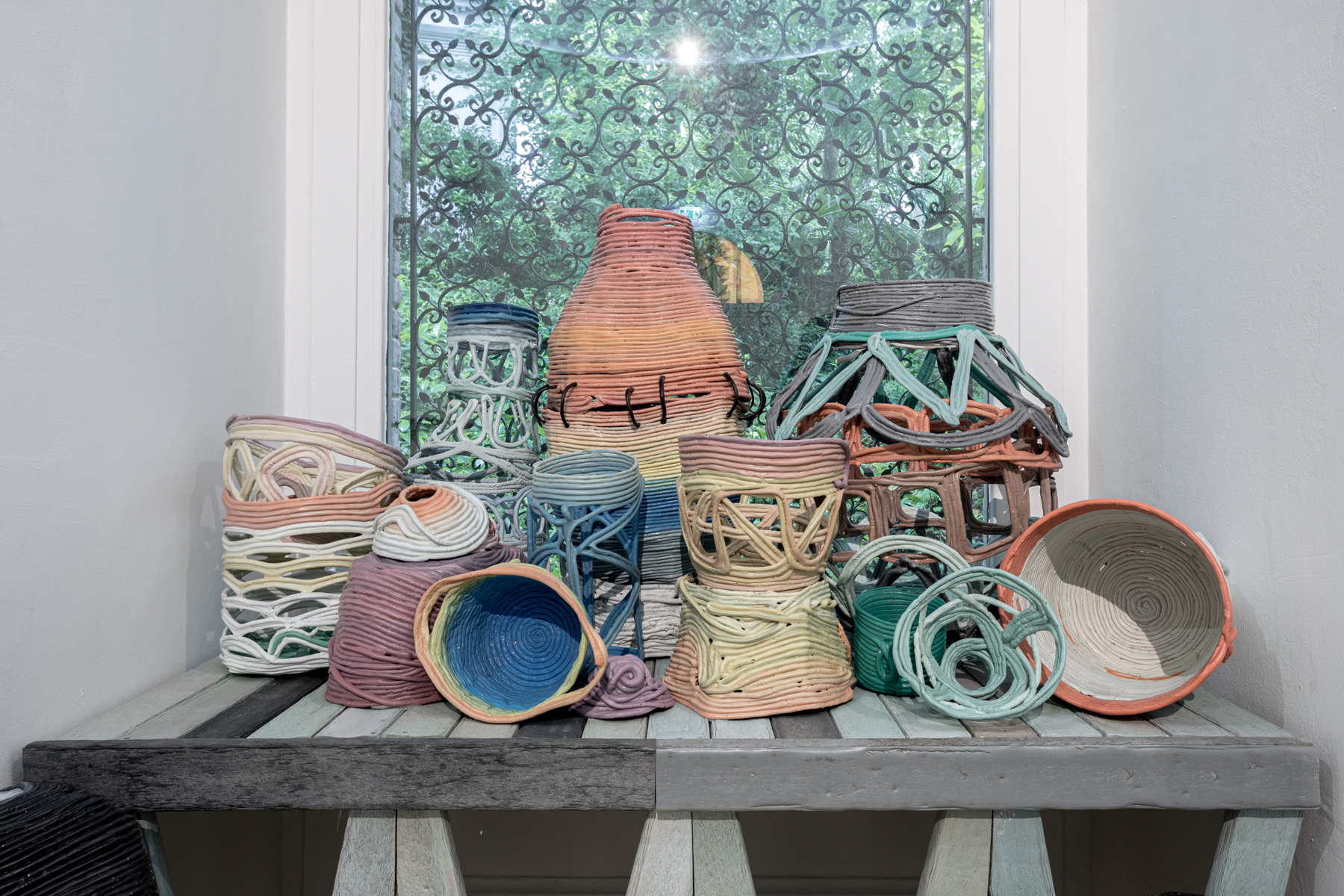
Images of installations (in order) by Lauren Yeager, Ang Li, Xavi L. Aguirre, Simon Anton, Norman Teague at the US Pavilion during the 18th Venice Architecture Biennale. Documentation by ReportArch / Andrea Ferro Photography.
Team
Paula Volpato
Assistant Curator
Faysal Altunbozar
and Chloe Munkenbeck
Exhibition Design
Normal
Graphic Design
Paul Zdon
Web Development
Chiara Barbieri
Director of Special Projects, Peggy Guggenheim Collection
Giacomo di Thiene
Thema Architettura
Columbia Books on Architecture and the City
Publishing Partner
Case Western Reserve University
Programming Partner
Resnicow and Associates
PR
Elizabeth Krasner
PR Consultant
Apice
Exhibition Installation
Noelle Burke and Isabella Greco
Norman Teague Design Studios
Parasite 2.0
Exhibitor Support
Dinamo
Type Design

Xavi Laida Aguirre (Cambridge, MA; they/them) is an architectural designer, founder, and director of the architectural design practice stock-a-studio and Assistant Professor of Architecture at the Massachusetts Institute of Technology. They develop material tactics and assemble architectures that reconsider our relationship to material circulation and aesthetics by making visible how architectural commodities pass through our built environments, both physically and digitally. Aguirre’s built and exhibition work has been commissioned by MOCA Geffen, Dartmouth College, Superblue Miami, Berghain Club, Materials & Applications, Queer Pile Up, and Design Core Detroit. Aguirre received a Master of Architecture from California State Polytechnic Pomona.

Simon Anton (Detroit, MI; he/him) is a multi-disciplinary artist, designer, and educator that collaborates across the fields of architecture, interior design, furniture, art, and jewelry. He is the co-founder of Thing Thing, a design collective that experiments in the transformation of post-consumer, hand-recycled polyethylene plastic sourced from surrounding communities and from industrial manufacturing. He also runs “Transforming Trash,” where he works with youth in Detroit to transform community plastic waste into art. His work has been presented at the Hong Kong Shenzhen Biennale, Expo Chicago, and Museum of Contemporary Art Detroit. Anton received a Master of Fine Arts in 3D Design from Cranbrook Academy of Art.

Ang Li (Boston, MA; she/her) is an architect and Assistant Professor at Northeastern University. She is the founder of Ang Li Projects, an interdisciplinary design practice that works at the intersection of architecture, experimental preservation, and circular design practices to examine the maintenance rituals and material afterlives behind architectural production. Her work investigates the spatial ecologies of the construction and demolition waste stream, exploring how collective practices of repair and reuse could give rise to new forms of architectural knowledge. Li’s work has been exhibited at Exhibit Columbus, the Chicago Architecture Biennial, and the Lisbon Architecture Trienniale. She holds a Master of Architecture from Princeton University.

Norman Teague (Chicago, IL; he/him) is a designer, Founder and Lead Designer of Norman Teague Design Studios, and Assistant Professor of Industrial Design at the University of Illinois Chicago. His work focuses on the systematic complexity of urbanism and the culture of communities. Teague works with common, locally sourced building materials and collaborates with local fabricators to create objects and spaces that explore simplicity, honesty, cleverness while being rooted within the culture of the client and community. Teague works to utilize design in the effort of uplift black and brown communities through unified listening and thinking with a hint of joint labor and care. In 2017, Teague was named creative collaborator on the exhibitions team for the Barack Obama Presidential Center and has works inside numerous museums across the United States. Teague holds a Master of Fine Arts in Designed Objects from the School of the Art Institute of Chicago.

Lauren Yeager (Cleveland, OH; she/her) is a conceptual artist and sculptor. Yeager re-imagines commonplace objects as sculptural components. Using salvaged consumer materials, she references modern and classical forms through sculptures that recover and elevate the value of these reclaimed objects. Largely unaltered, their domestic origins remain intact, allowing the works to fluctuate between contexts, to be both formal sculptures and relics of personal histories and daily monotony. Her work has been highlighted in several important national exhibitions including Sculpture Milwaukee 2021, FRONT International, and moCa Cleveland as well as within the collections of Progressive Insurance, the Cleveland Clinic Foundation, and other prominent private collections. Yeager received her Bachelor of Fine Arts from the Cleveland Institute of Art.
Tizziana Baldenebro (Cleveland, OH; she/her) is the executive director at SPACES in Cleveland, OH and the Commissioner and Co-Curator of Everlasting Plastics, the theme of the US Pavilion at the 2023 Venice Architecture Biennale. She served as the 2019-2020 Ford Curatorial Fellow at the Museum of Contemporary Art Detroit and held an internship at the Art Institute of Chicago within the Architecture & Design department. She has been a curator-in-residence at Red Bull Arts Detroit and an ALI Fellow at the National Association for Latino Arts and Culture. She currently sits on the board of FRONT International and is an editor-at-large at The Avery Review. Baldenebro received a Masters of Architecture from the School of the Art Institute of Chicago and a Bachelor of Arts degree in Anthropology from the University of Chicago.
Lauren Leving (Cleveland, OH; she/her) is the Curator at the Museum of Contemporary Art Cleveland (moCa) and the Co-Curator of Everlasting Plastics, the theme of the U.S. Pavilion at the 2023 Venice Architecture Biennale. Since joining moCa in 2019, she has developed projects with Aram Han Sinfuentes, Rebirth Garments, Finnegan Shannon, and Nina Chanel Abney. Leving was previously a Curatorial Fellow at Hyde Park Art Center and the Exhibitions Manager for Wrightwood 659, where she helped shape their inaugural year of programming and exhibitions of work by Ai Weiwei, Tetsuya Ishida, Tadao Ando, and the domestic premiere of the 2018 Venice Architecture Biennale U.S. Pavilion exhibition. Leving served as Board Secretary for Terrain Exhibitions and holds a Masters of Art in Museum & Exhibition Studies from the University of Illinois – Chicago and Bachelor of Arts from Tulane University.
Programs
The Home of the Human Safety Net, Procuratie Vecchie
La Serra dei Giardini
Giardini della Biennale
Abattoir Gallery & on Zoom
United States Pavilion, Giardini della Biennale
Swiss Institute
Gartner Auditorium of the Cleveland Museum of Art
Talk on Everlasting Plastics
The Home of the Human Safety Net, Procuratie Vecchie
Hosted by
SPACES
The exhibitors, designers, and curators of Everlasting Plastics are honored to welcome you to a Talk at the Human Safety Net at the recently renovated Procuratie Vecchie. The team behind the 2023 US Pavilion presentation will discuss their ideas and approaches to the works and design of the exhibition.
Sketches on Everlasting Plastics Book Talk and Reception
La Serra dei Giardini
Hosted by
Columbia Books on Architecture and the City
Columbia Books on Architecture and the City (CBAC) is pleased to announce an editorial intervention and ongoing collaboration with SPACES, the commissioner of the US Pavilion at the 18th International Architecture Exhibition at the 2023 Venice Biennale under the theme Everlasting Plastics.
The first iteration of this project, entitled Sketches on Everlasting Plastics, will accompany the exhibition to unfold a discursive map of the histories, urgencies, relations, and preoccupations attendant to the show. Sketches explores the infinite ways in which plastic permeates our bodies and our world. The project offers intimate and political accounts of our fraught relationships with the material that, rather than making a case for or against plastic, attempts to register our ongoing relationships to it, its impact on material cultures, and the harm and possibilities it entangles for our collective futures.
Edited by Isabelle Kirkham-Lewitt and Joanna Joseph of CBAC, the publication includes contributions by Tizziana Baldenebro, Kristen Bos, K. Jake Chakasim, Sky Cubacub, Heather Davis, Jennifer Gabrys, Stephanie Ginese, Aurelia Guo, Adam Hanieh, Ilana Harris-Babou, Zakiyyah Iman Jackson, Carolyn L. Kane, Laleh Khalili, Anjuli Fatima Raza Kolb, Naa Oyo A. Kwate, Esther Leslie, Lauren Leving, Ani Liu, Adie Mitchell, Timothy Mitchell, Gabrielle Printz, Kyla Schuller, Terry Schwarz, Pallavi Sen, Ayesha A. Siddiqi, and RA Washington.
As the title implies, Sketches on Everlasting Plastics stages an interaction: between institutions, between disciplines, between editorial and curatorial practice, between book and exhibition. Sketches leans into sketching as a methodology for broadening, revising, pushing the discourse on and around the exhibition Everlasting Plastics and our relationship to plastic matter and thought—refusing the exhibition as a static event and seeing it as an invitation to evolve the stakes of a shared conversation. In doing so, it also begins to form a working epistemology of plastic.
CBAC and SPACES will mark the release of Sketches on Everlasting Plastics at Serra dei Giardini in Venice on May 20, 2023, from 9:30am–12:30pm. The event will also initiate the next phase of the editorial project, gathering contributors from the publication and exhibition alongside new respondents.
Columbia Books on Architecture and the City is a small imprint housed within Columbia University’s Graduate School of Architecture, Planning, and Preservation that is dedicated to expanding the ground of architectural discourse and rethinking the assumptions of practice.
Public Opening Biennale Architettura 2023
Giardini della Biennale
Established in 1895, the International Art Exhibition of La Biennale di Venezia is considered the most prestigious contemporary art exhibition in the world, introducing hundreds of thousands of visitors to exciting new art and architecture every other year. The first International Architecture Exhibition took place in 1980. The 18th International Architecture Exhibition of La Biennale di Venezia: The Laboratory of the Future (May 20–November 26, 2023) is directed by Lesley Lokko and presents new ideas and projects from around the world.
Everlasting Plastics Watch Party & Celebration
Abattoir Gallery & on Zoom
Hosted by
Abattoir Gallery, CAN Journal, & SPACES
Celebrate the opening of Everlasting Plastics at the Biennale Architettura 2023 from Cleveland. Gather at Abattoir Gallery to toast the team in Venice during the exhibition's opening week at the US Pavilion.
Press Conference and Inauguration
United States Pavilion, Giardini della Biennale
Hosted by
SPACES
Join the United States' delegation to Italy, the director of the Peggy Guggenheim Collection, and the Commissioner and curators of the United States Pavilion in launching Everlasting Plastics at the 18th International Architecture Exhibition.
Everlasting Plastics, the official US presentation at the 18th International Architecture Exhibition of La Biennale di Venezia, brings together site-specific installations that explore one of the most ubiquitous materials in our world: plastic. The exhibition provides a global platform for reframing attitudes and approaches toward addressing the overabundance of plastic waste in our waterways, landfills, and streets. Everlasting Plastics is organized by Ohio-based alternative art organization SPACES in cooperation with the US Department of State’s Bureau of Educational and Cultural Affairs.
These Seasons | Sketches on Everlasting Plastics with Heather Davis, Gabrielle Printz and Anjuli Fatima Raza Kolb
Swiss Institute
Hosted by
Swiss Institute
For the sixth installment of Swiss Institute's These Seasons, please join us for a collective reading and conversation around Sketches on Everlasting Plastics. Sketches explores the infinite ways in which plastic permeates our bodies and our world––offering intimate and political accounts of our fraught relationship with the material that register how plastic is at once life-giving and death-dealing. Grappling with the protracted inheritance (biological, territorial, spatial, geological) of our petrochemical world, the project accounts for the toxic residues, relationships, and beliefs attendant to over-consumption and -production that have and continue to extend and evolve across generations.
With introductions by Columbia Books on Architecture and the City (CBAC) editors Isabelle Kirkham-Lewitt, Joanna Joseph, and Meriam Soltan and the 2023 US Pavilion Co-Curators Tizziana Baldenebro, Lauren Leving, and Assistant Curator Paula Volpato, the evening will feature readings from Heather Davis, Anjuli Fatima Raza Kolb, and Gabrielle Printz, followed by a discussion.
Sketches on Everlasting Plastics is the first publication in an ongoing editorial collaboration between CBAC, New York and SPACES, Cleveland.
Please RSVP to rsvp@swissinstitute.net.
Canal to Cuyahoga: Everlasting Plastics in Context
Gartner Auditorium of the Cleveland Museum of Art
Hosted by
SPACES, Case Western Reserve University's Department of Art History and Art, and the Cleveland Museum of Art
Case Western Reserve University’s Department of Art History & Art, in collaboration with SPACES and the Cleveland Museum of Art is proud to host a two-day public symposium in celebration of the internationally recognized exhibition Everlasting Plastics. Co-curated by Tizziana Baldenbro, Executive Director of SPACES, and Lauren Leving, Curator at the Museum of Contemporary Art Cleveland, Everlasting Plastics is currently on view at the U.S. Pavilion of the 2023 Venice Architecture Biennale (5.20.2023 – 11.26.2023). The symposium will serve as a forum to consider our cultural relationship to the ubiquity of plastic, its impact on material cultures, and the consequences and possibilities it entangles for our collective futures.
On Saturday, Oct. 7, the symposium will be held at the Gartner Auditorium of the Cleveland Museum of Art, 10-4. The day will begin with a panel featuring the five contributing artists to Everlasting Plastics: Xavi Aguirre, Assistant Professor of Architecture at the Massachusetts Institute of Technology; Detroit-based designer Simon Anton, cofounder of the design collective, “Thing Thing”; Ang Li, assistant professor at the Northeastern University School of Architecture; Norman Teague, assistant professor at the University of Illinois at Chicago School of Design; and Cleveland-based sculptor and conceptual artist Lauren Yeager. The symposium will conclude with a keynote lecture by interdisciplinary writer, artist, and theorist, Dr. Katie Schaag, Assistant Professor of Theater and Performance, Spelman College. Forging a space for connection and dialogue among artists, architects, curators, scholars, students, and members of the Cleveland community, we will trace the complex networks of plastic production, consumption, and waste from the Venetian Lagoon to the Lake Erie watershed, opening up new possibilities for innovation, collaboration, and revitalization.
Sketches on Everlasting Plastics
Edited by Isabelle Kirkham-Lewitt + Joanna Joseph, Columbia Books on Architecture and the City
-
March 19, 2023 / Cleveland, Ohio
Tizziana Baldenebro + Lauren Leving
On February 4, 2023, a Norfolk Southern freight train derailed in East Palestine, OH, a village ninety miles southeast of Cleveland, OH—where we live—and fifty-one miles northwest of Pittsburgh, PA.
-
The Notes Within My Blood
RA Washington
Within my blood /
There are strains of promises /
Made by a budding nation /
To my once enslaved family -
Eating the Future
Heather Davis
How long plastic will endure is an open-ended question, unknown and subject to many variables, including chemical composition, exposure to sun and wind, erosion, the kinds of animals that encounter it, and where it ends up.
-
Crude Sedimentation
Laleh Kahlili
For two sweltering summers in 1989 and 1990, I worked as an engineer at Amoco’s Chocolate Bayou plant in Alvin, Texas, near Galveston.
-
Aesop Condoms
Aurelia Guo
One night, while dancing, she fell off the stage and crashed onto a customer / a body clad in a resilient gleam / acting as a tantalizingly flimsy barrier / Strange hands. Inquisitive hands. Dirty hands.
-
The Making of a Synthetic World
Adam Hanieh
In the decades immediately following World War II, the rapid spread of synthetic materials derived from petroleum colonized all aspects of everyday life. These new petrochemicals reshaped the cultural practices and material products associated with the “American Dream.”
-
Hard Mother
Anjuli Fatima Raza Kolb
Most spinal catheters—for example, those used to deliver epidural anesthesia during childbirth—are made of polyamide resin, polyurethane, and nylon block copolymers.
-
On the Plasticity of Plastics
Carolyn L. Kane
No laboratory of the future is possible without the stuff of the past. The conditions of possibility for any “new” technology always derive from the present. Plastics are no exception.
-
DuPont’s Better Living, Working Women, and Industrial Toxicology
Gabrielle Printz
My baby has just settled in his crib, and I am doing a bit of work. While he sleeps, I scroll the Hagley Library and Museum’s digital archives on my laptop from bed, while hooked up to two Medela breast pumps humming the silicone-softened song of mechanically expressed milk.
-
Seduction Concentrate
A conversation with Ilana Harris-Babou and Pallavi Sen
I wanted to talk to you, because we are collaborators. One of our biggest collaborations was being roommates during the first Covid lockdown in 2020. I learned a lot from you and your relationship with plastics and waste during that time.
-
Whither the Forty Ounce?
Naa Oyo A. Kwate
At the end of Boyz n the Hood, Doughboy crosses the street to talk to Tre. It’s morning—we don’t know what time, exactly, but Doughboy confesses that he hasn’t been up this early in a long time.
-
Edges, Ends of Worlds, and Plastic Oceans
Jennifer Gabrys
Edges and ends of worlds are encountered frequently in the films of Harun Farocki. They form recurrent courses of navigation, tugging along ships and airplanes, riders and avatars, waves and clouds, memories and simulations.
-
Seed Bead Inheritances & Other Toxicities
Kristen Bos
Years before I would turn to seed beads and beading as a research subject and co-conspirator, I learned, while beading with an Elder in a beading circle at the Native Women’s Resource Centre of Toronto, that we did not just get seed beads from colonizers as is commonly thought.
-
Imperial Serial
Esther Leslie
“Arctic Junky: Plastic Sugar Puffs toy from 1958 washes up in the Arctic 59 years later to give a chilling warning about plastics in our ocean,” declared a 2017 headline in The Sun.
-
Stone Now Cuts Like Cheese
Adie Mitchell and Timothy Mitchell
In November 1851, the German architect Gottfried Semper articulated the material crisis facing the arts. Semper had spent the previous year in London, helping design the Canadian, Danish, Swedish, and Ottoman pavilions at the Great Exhibition.
-
In Place Of
Terry Schwarz
In Cradle to Cradle, architect William McDonough describes pollutants as misplaced materials. Carbon, for example, doesn’t belong in the atmosphere, where it traps the sun’s energy and contributes to global warming. Carbon belongs in the soil, where it supports plant life and, by extension, feeds the entire world.
-
The Racial Logic of Impressibility
Kyla Schuller
Plasticity comprises the capacity to change, to be molded, to radically deform and transform under pressure while miraculously retaining self-sameness. Instead of falling apart, plasticity persists in the face of destruction.
-
Rebirth Garments
Sky Cubacub
Rebirth Garments specializes in making swimwear, dancewear, and athleticwear for queer and trans disabled folks of all sizes and ages. I started the clothing line in the summer of 2014, when there were very few gender-affirming undergarment options and even fewer swimwear options available.
-
Intimate Synthetic Entanglements
Ani Liu
Shortly after I finished breastfeeding my son, I learned that researchers had found microplastics in human breastmilk.
-
Picking Our Poison
Ayesha A. Siddiqi
The word “microplastic” was coined in 2004, fifty-one years after General Electric and Bayer began developing polycarbonate, fifty-four years after DuPont began manufacturing polyester, and sixty-two years after Dow Chemical built a polystyrene plant.
-
before / another
Stephanie Ginese
the only truth: a grim plastic nebula has swallowed the sky
& what of the water below
-
The Ontological Slippage and the Amassing Utility of Blackness
Zakiyyah Iman Jackson
While scholars of race have critiqued the conflation of black(ened) humans with animals, objects, and machines in Enlightenment discourses, my concept of ontologized plasticization reframes the confluence of blackness and the nonhuman.
-
LeCreebusier Encounters the Plastic “Other”
K. Jake Chakasim
LeCreebusier, the Indigenous Trickster, unearths a discarded phoropter, a thing of the past that can quickly determine the exact vision correction needed to readjust the twenty-first century Indigenous gaze.
Press
For inquiries, please contact: 2023USPavilion@resnicow.com.
To download the press kit for the 2023 US Pavilion, please provide the requested information on this form.
Support
This exhibition was funded in part by a grant from the United States Department of State.

Support for Everlasting Plastics is provided by:
